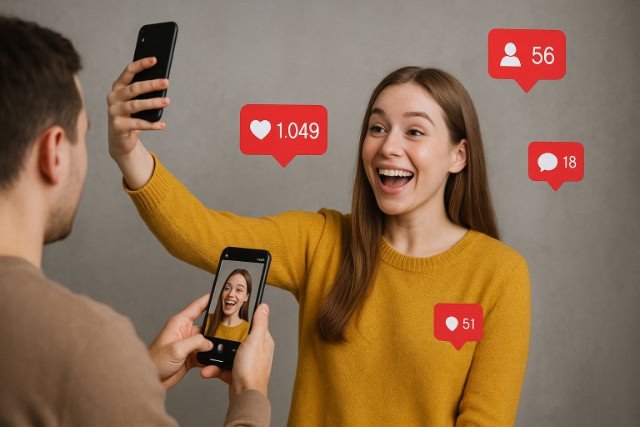Introduction
The term coomersu represents a semantic fusion of two culturally loaded archetypes coomer and consumer and describes a new form of emotionally driven, identity-centered consumption. Born from meme culture and evolving into a serious analytical model, coomersu defines a behavioral pattern where individuals make purchases not for functionality, but for emotional gratification, community validation, and self-expression. Unlike traditional consumers, coomersu individuals engage in commerce as a form of participation buying products not only to possess them, but to belong, support, and signify. In the age of parasocial relationships, algorithmic curation, and creator economies, coomersu has moved from a satirical term to a framework shaping modern commerce, especially as brands build ecosystems that monetize intimacy and collective identity. This phenomenon now informs marketing strategies, platform design, and even digital sociology, reflecting how digital-age capitalism transforms attention, emotion, and community into recurring revenue.
What Does “coomersu” Mean and Where Did It Originate?
The term “coomersu” is a digital-age neologism that fuses two internet archetypes: the coomer a figure of compulsive indulgence and the consumer a participant in market exchange. Together, they describe a hyper-consumer persona whose buying habits are driven not merely by product value, but by emotional attachment, identity projection, and community belonging.
Coomersu originated from meme culture on platforms like Reddit, Twitter (X), and 4chan, where it was initially used mockingly to describe users who over-spend on fandom merchandise or influencer products. Over time, marketers and digital culture scholars began noticing its accuracy in describing real-world behaviors where emotion and community override rational economic choice.
Today, “coomersu” functions both as a label for a new consumer psychology and a framework for emerging business models built around emotional resonance, micro-community influence, and identity signaling.
How Did “coomersu” Evolve From Meme Culture?
The early “coomersu” meme was rooted in irony. It caricatured fans who would “buy anything” from their favorite creator limited-edition merch, NFTs, or paid shout-outs. But by 2022–2023, the term gained analytical weight. Digital anthropologists and trend analysts began observing that many communities especially around K-pop, gaming, VTubers, and fitness influencers displayed patterns of ritualistic consumption, dopamine-based anticipation, and community status signaling.
This cultural shift coincided with the maturation of creator economies, where the boundary between fandom and marketplace dissolved. Memes like “coomersu” began reflecting not just mockery, but a commentary on late-stage consumer capitalism, where self-worth and identity intertwine with purchases made “for the vibe.”
The evolution from meme to model reflects the broader internet tendency to turn jokes into frameworks from “simp” and “stan” to “doomscrolling” and “main character energy.” Coomersu, in this sense, captures the new phase of emotion-driven commerce born from meme-born social behavior.
What Are the Two Main Senses of Coomersu (Behavior vs Model)?
The word “coomersu” operates in two distinct but overlapping senses:
| Aspect | Coomersu as Behavior | Coomersu as Business Model |
| Definition | Emotional, impulsive, community-validated consumption | Platform or brand strategy designed to harness emotional fandom |
| Focus | The consumer’s psychology | The ecosystem’s design and monetization |
| Example | A fan buying every drop from a streamer they admire | A brand gamifying loyalty via exclusive, fan-driven product cycles |
| Goal | Emotional gratification and social belonging | Sustainable engagement loops and co-creation revenue |
As behavior, coomersu describes the individual’s emotional decision-making. As a model, it represents a business architecture that monetizes belonging, parasocial intimacy, and social validation.
This duality makes coomersu both a mirror and a machine a reflection of human psychology and a blueprint for post-rational consumer ecosystems.
Why is Coomersu Becoming More Relevant in 2024–2025?
By 2024, multiple forces have converged to make coomersu a mainstream phenomenon. Traditional advertising fatigue, rising digital loneliness, and the dominance of creator-led economies all play roles. Consumers no longer respond to generic brand messages they crave authentic connections and identity-affirming participation.
Platforms like TikTok Shop, Etsy fandom boutiques, and Patreon communities embody this dynamic. They thrive on emotionally charged exchanges, where purchase equals participation. As economic pressures rise, younger audiences compensate by finding meaning and identity through community consumption.
Marketers in 2025 are now studying coomersu behavior as a predictive indicator of cultural resonance. The more a product elicits emotional and communal investment, the higher its retention and word-of-mouth power.
What Cultural, Technological, and Social Trends Fuel Coomersu?
Coomersu thrives on a web of interlocking trends:
- Emotional Commerce: Where buying fulfills emotional needs, not material ones.
- Fandom Economy: The merging of cultural participation and consumerism.
- Parasocial Intimacy: Illusory relationships between fans and creators.
- Algorithmic Amplification: Recommendation systems that reinforce emotional triggers.
Culturally, this mirrors the post-pandemic shift toward digital tribes and virtual identities. Technologically, it’s fueled by micro-subscription systems, creator tools, and gamified loyalty loops. Socially, it reflects the collapse of boundaries between entertainment, friendship, and commerce.
In essence, coomersu is the logical outcome of an algorithmic society that monetizes attention and converts emotion into transaction
How Do Parasocial Relationships and Social Media Algorithms Contribute?

Parasocial relationships where audiences feel emotionally bonded with creators are the psychological core of coomersu. They blur the line between admiration and obligation. Fans buy not for utility, but to “support” someone who feels personally known to them.
Social media algorithms reinforce this loop by rewarding emotional engagement. When users interact deeply with a creator, they’re shown more of their content amplifying the cycle of attachment, anticipation, and eventual purchase.
This dynamic forms the dopamine-commerce loop:
- Emotional connection →
- Anticipation of content →
- Product drop or exclusive offer →
- Reward purchase →
- Social validation within community.
Such loops drive retention metrics but can also edge into compulsive behavior, echoing addiction patterns seen in gambling and mobile gaming.
How Does Coomersu Behavior Manifest in Real Consumers?
Real-world coomersu behaviors often appear subtle at first: collecting every colorway of a favorite influencer’s brand, buying merchandise to “signal” fandom status, or joining paid communities for early access to content. Over time, these actions become ritualized consumption where the act of buying itself sustains identity and belonging.
Consumers displaying coomersu traits often share three markers:
- Emotional justification of purchases (“It supports my community”).
- Fear of exclusion from limited drops or events.
- Narrative consumption the feeling that buying completes a personal story arc.
Unlike traditional impulse buying, coomersu spending is socially rationalized seen as an investment in one’s tribe or digital persona.
What Traits and Patterns Define Someone as a “coomersu Shopper”?
A coomersu shopper often exhibits:
- High emotional attachment to creators or communities.
- Frequent small transactions tied to content cycles.
- Anticipation rituals (e.g., countdowns for drops).
- Community-based validation after purchases.
- Justification through identity (“I’m a real fan”).
Psychologically, these patterns align with identity reinforcement, dopamine feedback, and social proof loops. Economically, they create recurring micro-purchase ecosystems that outperform traditional loyalty programs.
Yet, these traits also expose consumers to over-spending risks, emotional burnout, and distorted self-worth linked to material engagement.
What Psychological Drivers (Fomo, Identity, Escapism) Underpin It?
Three primary psychological mechanisms drive coomersu behavior:
- FOMO (Fear of Missing Out): Limited drops and exclusivity create urgency.
- Identity Construction: Purchases serve as self-expression.
- Escapism: Consumption becomes emotional refuge from uncertainty.
Each mechanism is intensified by social validation metrics likes, shares, and comments act as micro-rewards, reinforcing purchase as social performance.
Neuroscientific studies show dopamine release occurs not just from the purchase itself, but from anticipatory engagement the same mechanism exploited by gambling and social media notifications. Coomersu thus exploits the anticipation-reward pathway in digital consumer psychology.
How Do Brands and Platforms Use Coomersu as a Business Model?
Brands now actively design for coomersu dynamics. They build ecosystems where fans feel emotional stakes in product success. Examples include:
- Crowdfunded product drops that reward early emotional buy-in.
- Fan voting systems that make consumers feel like co-creators.
- Micro-subscription tiers (Patreon, Ko-fi, YouTube Memberships).
- Gamified loyalty through points, badges, or NFT collectibles.
This business model prioritizes emotional engagement as ROI. The more a brand can turn its audience into a participatory fandom, the more stable its long-term revenue base.
However, critics warn that such systems risk exploiting parasocial trust for profit, leading to ethical concerns around manipulation and transparency.
What is “community-centric Commerce” and How Does It Relate?
Community-centric commerce (CCC) is the infrastructure underlying coomersu models. It shifts marketing from persuasion to participation. Instead of selling to audiences, brands sell through communities leveraging shared identity as a currency.
Platforms like Discord, Roblox, and Shopify Collabs embody CCC by integrating co-creation, feedback, and micro-ownership into the buying process. In these spaces, emotional investment equals economic investment.
Coomersu represents the emotional front-end of CCC, while CCC provides the architectural back-end that operationalizes it.
What Features Do Coomersu Platforms Adopt (Voting, Clubs, Co-creation)?
Coomersu platforms typically integrate:
- Voting systems (fans decide next designs).
- Creator clubs with exclusive digital goods.
- Co-creation labs where users submit or remix content.
- Social validation layers (leaderboards, badges, reaction feeds).
- Tiered micro-subscriptions offering escalating intimacy levels.
These features create feedback loops of identity and status, turning consumption into a form of gamified self-expression.
What Are Benefits and Risks for Consumers & Brands?
| Stakeholder | Benefits | Risks |
| Consumers | Emotional connection, belonging, identity reinforcement | Overspending, addiction, emotional dependency |
| Brands | Loyalty, organic advocacy, long-tail revenue | Ethical backlash, burnout of trust, dependency on hype cycles |
| Communities | Empowerment, participatory culture | Fragmentation, toxicity, parasocial rivalry |
Balanced coomersu ecosystems generate mutual value through shared enthusiasm, but exploitative ones trigger ethical and psychological harm.
How Can Coomersu Behavior Be Harnessed Ethically by Brands?
Ethical coomersu strategies focus on transparency, consent, and co-agency. Brands can:
- Disclose scarcity mechanics to reduce manipulation.
- Empower consumer feedback loops beyond monetization.
- Offer mindful consumption tools (spending caps, reminders).
- Reward creativity and contribution, not just purchase volume.
Ethical application recognizes emotional connection as trust capital, not as a trigger to maximize extraction.
What Financial, Psychological, or Social Risks Exist?
Unchecked coomersu dynamics can lead to:
- Compulsive spending and debt accumulation.
- Emotional exhaustion from constant hype cycles.
- Community toxicity fueled by status hierarchies.
- Distorted identity dependence on consumer behaviors.
Psychologists compare these symptoms to digital addiction disorders, where reward anticipation and social feedback override rational self-control.
Brands ignoring these risks face not only reputational backlash, but also potential regulatory scrutiny under emerging digital consumer protection laws.
How to Spot if You’re Acting Like a Coomersu (and How to Moderate It)?
Self-awareness is the first defense. Ask yourself:
- Do I buy things mainly to feel connected?
- Do I feel anxious missing a drop?
- Do I justify purchases as “supporting” rather than needing?
- Do I overspend for validation or identity?
If yes to several, you may be engaging in coomersu-like consumption.
Moderation strategies include delayed purchasing (24-hour rule), setting spending limits, and decoupling identity from brand loyalty. Practicing digital minimalism curating feeds to reduce emotional triggers can also help restore intentionality.
What Strategies Help Rebalance Impulse vs Intentional Buying?
To transition from coomersu to conscious consumption:
- Track emotional triggers tied to purchases.
- Use budgeting apps to visualize spending patterns.
- Replace hype rituals with learning or creative participation.
- Engage communities for dialogue, not just drops.
- Adopt “slow fandom” principles focusing on quality and meaning over novelty.
These approaches maintain connection without succumbing to compulsive consumerism.
How Does Coomersu Compare With Adjacent Trends and Models?
| Model | Core Focus | Emotional Intensity | Community Role | Example |
| Coomersu | Emotional + community-driven consumption | High | Central | VTuber merch ecosystems |
| Emotional Commerce | Sentiment-based purchase design | Medium | Peripheral | Apple storytelling campaigns |
| Social Commerce | Peer influence + social proof | Medium | Shared | TikTok Shop, Instagram Shop |
| Fandom Economy | Passion-based cultural participation | High | Central | K-pop fandom merch |
| Creator Economy | Individual monetization of influence | Variable | Optional | Patreon, OnlyFans |
Coomersu differs by fusing the emotional intensity of fandom with the infrastructural mechanisms of commerce, forming a hybrid model of participatory capitalism.
What’s the Future Outlook for Coomersu in 2026+?

As Web3, AR/VR, and AI technologies mature, coomersu will evolve into immersive, mixed-reality commerce. Fans may soon co-design digital collectibles, own blockchain-verified micro-stakes in creator brands, or interact with AI-generated influencer avatars.
These developments will amplify emotional immersion while also introducing new governance and ethical dilemmas. Regulators and psychologists are likely to address data manipulation, emotional exploitation, and consumer protection within these hyper-personalized ecosystems.
A counter-movement toward digital sobriety and minimalism will likely rise in parallel championing intentional, transparent, and community-first models.
Conclusion
Coomersu captures the defining paradox of 21st-century consumption: people buy not just for utility, but for meaning. It embodies a cultural shift where identity, emotion, and community converge into economic behavior. For marketers, it’s a lens to design emotionally resonant ecosystems. For consumers, it’s a mirror to recognize when belonging turns into dependency.
Understanding coomersu isn’t about ridicule or hype. It’s about mapping the emotional architecture of digital capitalism and deciding how to engage it with awareness and ethics.
Explore more insightful and valuable content on our blog VeoTag.com! Stay updated with helpful tips, expert advice, and in-depth articles that enhance your knowledge.
Rad Also:
gramhir.pro: What It Is, What It Isn’t & How to Use It (2025 Guide)
Olympus Scanlation: Fan Translations Explained
Ontpress Freshupdates: How It Works, Features
Twitter Viewer: How to See Tweets, Profiles & Analytics
5stars stocks.com: In-Depth Review, How It Works
FAQ’s
It’s a blend of coomer and consumer, describing emotionally charged, community-driven buying behaviors often tied to fandom or influencer ecosystems.
It began as a meme but now functions as a recognized consumer model influencing commerce design, particularly in creator economies.
Frequent emotional purchases, community validation seeking, anticipation of drops, and identity-based justification of spending.
Through transparency, empowerment, and co-creation focusing on community participation rather than exploitation.
Potential for compulsive spending, emotional burnout, and parasocial dependency.
Monitor if purchases serve emotional reassurance more than practical need. Implement mindfulness and spending audits.
It merges both using emotion as the fuel and community as the engine of continuous engagement.
A hybrid of immersive AR/VR shopping, AI-driven fandom personalization, and blockchain-enabled fan ownership systems.

